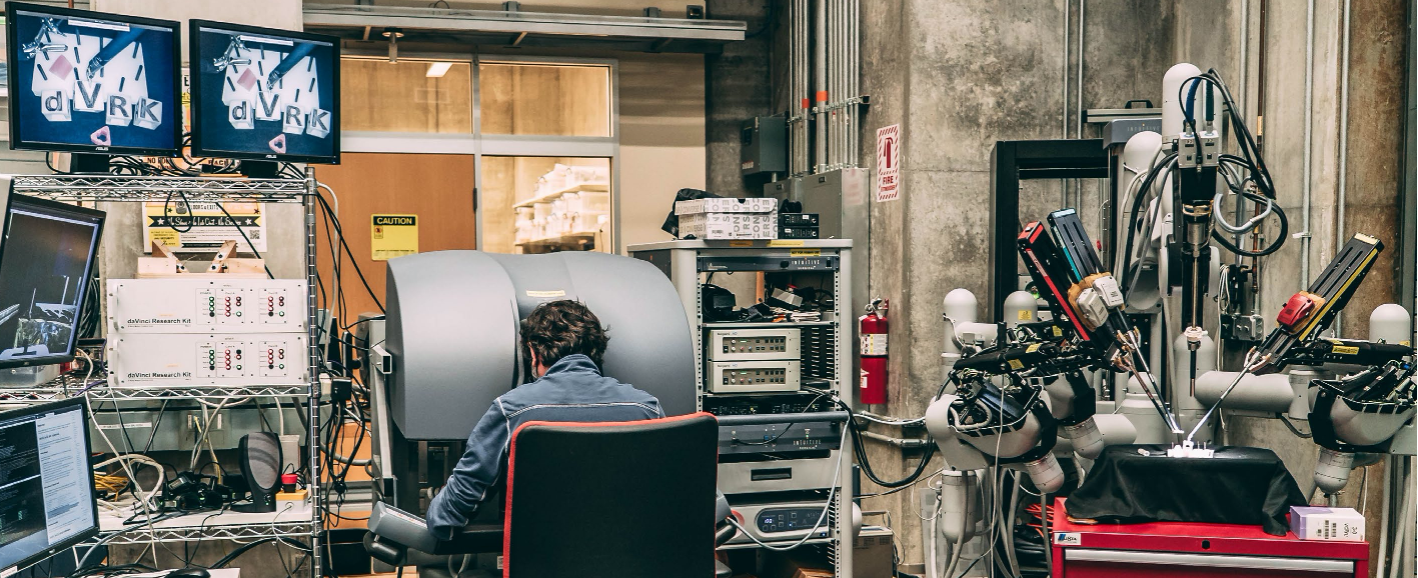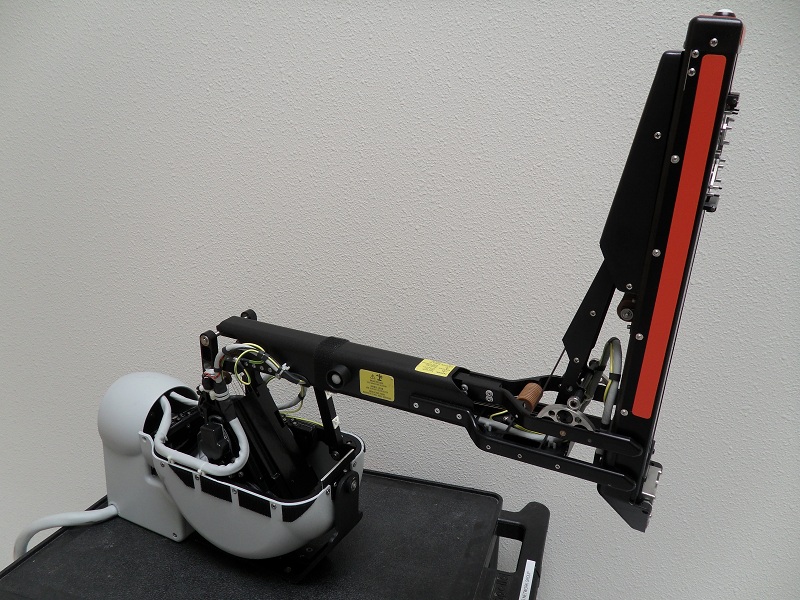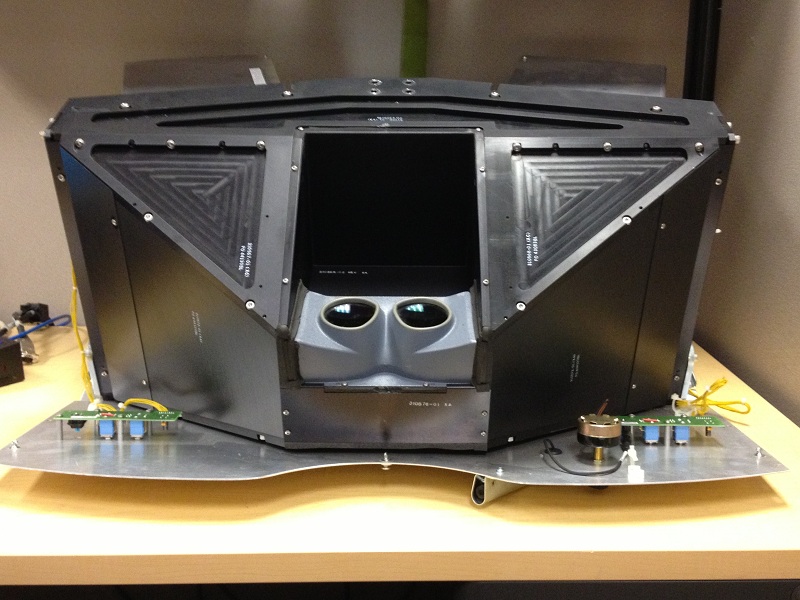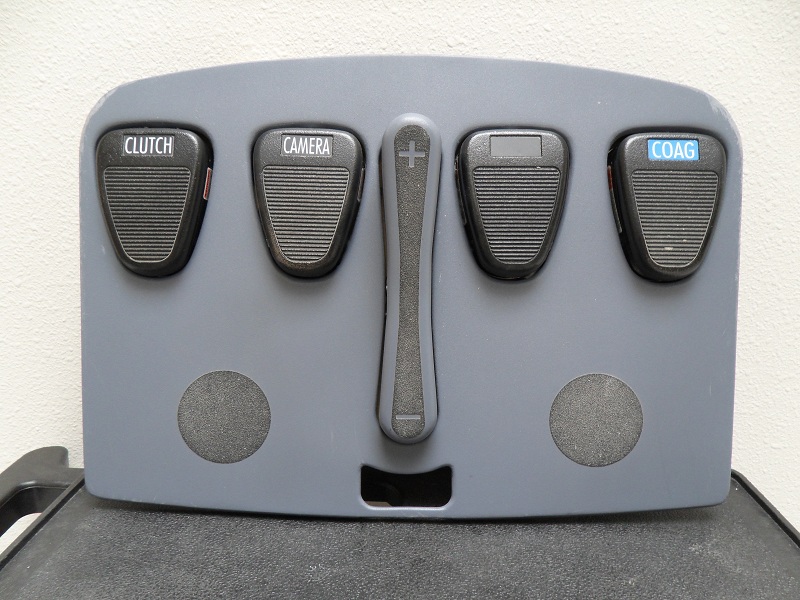Main Page
Welcome to the da Vinci Research Kit wiki community

|
This wiki is home to users of the Research Kit for the da Vinci Surgical System.
Contents
The da Vinci Research Kit
The da Vinci Research Kit (dVRK) is a collection of first-generation da Vinci components that can be used to assemble a research platform for exploring telerobotics in medicine. The idea behind this initiative is to provide the core hardware to a network of researchers worldwide, by repurposing retired clinical systems. This hardware is provided in combination with dedicated electronics to create a system that enables researchers to access to any level of the control system of the robot as well as the data streams within it.
Background
The da Vinci Research Kit research platform was developed through a collaboration between academic institutions, Johns Hopkins University and Worcester Polytechnic Institute, and Intuitive Surgical Inc. in 2012. The introduction of the dVRK allowed research centers to share a common hardware platform without restricted access to the underlying back-and forward control system. This has led to a significant boost to the development of research in surgical robotics during the last decade and generated new opportunities for collaboration and to connect a surgical robot to other technologies. Today, the dVRK consortium includes mostly universities and academic centers within hospitals, and some companies.
Components
The Kit contains the following components:
- Two da Vinci Master Tool Manipulators (MTMs)
- Two da Vinci Patient Side Manipulators (PSMs)
- A stereo viewer
- A foot pedal tray
- Manipulator Interface Boards (dMIBs)
- Basic accessory kit
See the system in action on YouTube (credit: the JHU team).
Documentation
The User Group
| University/Group | PI | PI URL | Group Wiki Page | ||
|---|---|---|---|---|---|
| North America | |||||
| The Johns Hopkins University | Professor Russell Taylor Peter Kazanzides |
[1] | JHU Group Page | ||
| Worcester Polytechnic Institute | Professor Greg Fischer | [2] | WPI Group Page | ||
| Stanford University | Professor Allison Okamura | [3] | Stanford Group Page | ||
| The University of British Columbia | Professor Tim Salcudean | [4] | UBC Group Page | ||
| Vanderbilt University | Professor Nabil Simaan | [5] | Vanderbilt Group Page | ||
| Assistant Professor Jie Ying Wu | |||||
| University of California, Berkeley | Professor Pieter Abbeel Professor Ken Goldberg |
[6] [7] |
Berkeley Group Page | ||
| Carnegie Mellon University | Professor Howie Choset | [8] | CMU Group Page | ||
| Sick Kids Children's Hospital | Professor James Drake | [9] | Sick Kids Group Page | ||
| Clemson University | Professor Venkat Krovi | [10] | Clemson University | ||
| University of Western Ontario & CSTAR | Professor Rajni Patel | [11] | CSTAR Group Page | ||
| Wayne State University | Professor Abhilash Pandya | [12] | Wayne State University | ||
| Case Western Reserve University | Professor M. Cenk Cavusoglu Assistant Professor Zonghe Chua |
[13] [14] |
Case Western Reserve University | ||
| University of California San Diego | Assistant Professor Michael Yip | [15] | University of California San Diego | ||
| Assistant Professor Tania Morimoto | [16] | ||||
| University of Texas, Dallas | Professor Ann Majewicz Fey | [17] | University of Texas, Dallas | ||
| Purdue University | Professor Juan Wachs Professor Denny Yu |
[18] [19] |
Purdue University | ||
| University of Alberta | Professor Mahdi Tavakoli | [20] | University of Alberta | ||
| University of Texas at Austin | Assistant Professor Farshid Alambeigi | [21] | University of Texas at Austin | ||
| University of Illinois at Chicago | Professor Liaohai Leo Chen | [22] | University of Illinois at Chicago | ||
| University of Utah | Professor Alan Kuntz | [23] | University of Utah | ||
| New York University | Assistant Professor S. Farokh Atashzar | [24] | New York University | ||
| Europe | |||||
| Scuola Superiore Sant'Anna | Professor Arianna Menciassi | [25] | SSSA Group Page | ||
| Óbuda University | Professor Tamás Haidegger | [26] | Óbuda University | ||
| University of Verona | Professor Paolo Fiorini | [27] | University of Verona | ||
| Imperial College | Professor Guang-Zhong Yang | [28] | Imperial College | ||
| University College London | Professor Danail Stoyanov | [29] | University College London | ||
| University of Naples Federico II | Professor Bruno Siciliano | [30] | University of Naples Federico II | ||
| Politecnico di Milano | Professor Elena De Momi | [31] | Politecnico di Milano | ||
| University of Leeds | Professor Pietro Valdastri | [32] | University of Leeds | ||
| University of Innsbruck | Professor Yeongmi Kim Professor Matthias Harders |
[33] [34] |
University of Innsbruck | ||
| University of Reutlingen | Professor Oliver Burgert | [35] | University of Reutlingen | ||
| University of Twente | Professor Sarthak Misra | [36] | University of Twente | ||
| Asia | |||||
| Seoul National University | Professor Sungwan Kim | [37] | Seoul National University | ||
| Ben Gurion University of the Negev | Professor Ilana Nisky | [38] | Ben Gurion University of the Negev | ||
| The Chinese University of Hong Kong | Professor Philip WY Chiu | [39] | The Chinese University of Hong Kong | ||
| Associate Professor Samuel Au | [40] | ||||
| Yonsei University | Professor Jongsoo Lee Professor Jongeun Choi |
[41] [42] |
Yonsei University | ||
Publications
Publications associated with the use of dVRK currently online are more than 290. And this includes international conferences or journals, as well as publications related to workshops or symposiums, and open-access articles stored in arXiv. The published works range between many fields like automation, skill assessment and gesture recognition, hardware implementation and integration, system simulation and modelling, imaging and vision.
Here are listed some of the most interesting and up to date reviews where you can find most of the dVRK related articles:
2022
2021
2020
- R. H. Taylor, P. Kazanzides, G. S. Fischer, and N. Simaan, “Medical robotics and computer-integrated interventional medicine,” in Biomedical Information Technology, Elsevier, 2020.
- A. Lasso and P. Kazanzides, “System integration,” in Handbook of Medical Image Computing and Computer Assisted Intervention, Elsevier, 2020.
- A. E. Abdelaal, P. Mathur, and S. E. Salcudean, “Robotics In Vivo: A Perspective on Human–Robot Interaction in Surgical Robotics,” Annu. Rev. Control. Robot. Auton. Syst., vol. 3, 2020.
2019
- R. Nagyné Elek and T. Haidegger, “Robot-Assisted Minimally Invasive Surgical Skill Assessment—Manual and Automated Platforms,” Acta Polytech. Hungarica, vol. 16, no. 8, 2019.
- T. D. Nagy and T. Haidegger, “Recent Advances in Robot-Assisted Surgery: Soft Tissue Contact Identification,” in 2019 IEEE 13th International Symposium on Applied Computational Intelligence and Informatics (SACI), 2019.
- H. Nakawala et al., “Requirements elicitation for robotic and computer-assisted minimally invasive surgery,” Int. J. Adv. Robot. Syst., vol. 16, no. 4, 2019.
- T. Haidegger, “Autonomy for Surgical Robots: Concepts and Paradigms,” IEEE Trans. Med. Robot. Bionics, vol. 1, no. 2, 2019.
- F. Ficuciello, G. Tamburrini, A. Arezzo, L. Villani, and B. Siciliano, “Autonomy in surgical robots and its meaningful human control,” Paladyn, J. Behav. Robot., vol. 10, no. 1, 2019.
- S. O’Sullivan et al., “Legal, regulatory, and ethical frameworks for development of standards in artificial intelligence (AI) and autonomous robotic surgery,” Int. J. Med. Robot. Comput. Assist. Surg., vol. 15, no. 1, 2019.
- L. Qian, J. Y. Wu, S. DiMaio, N. Navab, and P. Kazanzides, “A Review of Augmented Reality in Robotic-Assisted Surgery,” IEEE Trans. Med. Robot. Bionics, 2019.
2018
2017
2016
2015
- Á. Takács et al., “Joint platforms and community efforts in surgical robotics research,” MACRo 2015, vol. 1, no. 1, 2015.



